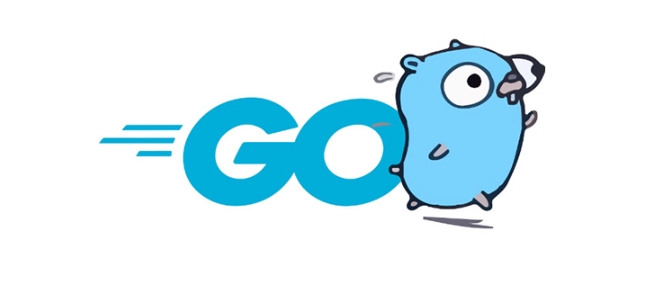Golang基準代碼的最佳實踐是什麼?
使用正確的基準測試函數結構,命名以BenchmarkXxx開頭,並利用bN自動調整迭代次數;2. 避免結果未使用、設置代碼混入計時和內存分配干擾,通過黑盒變量或b.ResetTimer()消除偏差;3. 使用b.Run()測試不同輸入規模以分析性能擴展性;4. 保持環境穩定,關閉後台干擾,控制GOMAXPROCS並使用-benchmem查看內存分配;5. 用benchstat工具多次運行並統計分析結果,確保比較的可靠性。遵循這些步驟可獲得準確、可重複的Go基準測試結果。

Benchmarking code in Go is straightforward thanks to the built-in support in the testing package, but doing it effectively requires following best practices to get reliable and meaningful results. Here's how to do it right.

1. Use go test -bench with Proper Benchmark Function Structure
Go's standard tooling includes benchmarking via functions that follow the pattern func BenchmarkXxx(*testing.B) . Always name your benchmark function correctly and use the bN loop counter to run the target code multiple times.
func BenchmarkMyFunction(b *testing.B) {
for i := 0; i < bN; i {
MyFunction()
}
}Run it with:

go test -bench=.
Key point: The benchmark runner adjusts bN automatically to get statistically significant results—don't hardcode iteration counts.
2. Avoid Common Pitfalls That Skew Results
Even small mistakes can make benchmarks misleading. Watch out for:

Unused results: If your function returns a value you don't use, the compiler might optimize the call away.
✅ Fix: Use
blackholevariables orruntime.KeepAliveif needed:var result int for i := 0; i < bN; i { result = MyFunction() } _ = result // Ensure result is usedSetup code inside the loop: Expensive setup (eg, allocations, initialization) should be outside or reset using
b.ResetTimer().✅ Example:
func BenchmarkWithSetup(b *testing.B) { data := make([]int, 1000) // Pre-populate data for i := range data { data[i] = i } b.ResetTimer() // Start timing after setup for i := 0; i < bN; i { Process(data) } }Memory allocations: Use
-benchmemto see allocs per op:go test -bench=. -benchmem
This shows whether your function is causing unnecessary heap allocations.
3. Benchmark Different Input Sizes
To understand performance characteristics (eg, O(n) vs O(n²)), test across a range of inputs using b.Run() :
func BenchmarkMyFunction_Sizes(b *testing.B) {
for _, size := range []int{10, 100, 1000} {
b.Run(fmt.Sprintf("Size%d", size), func(b *testing.B) {
data := make([]int, size)
for i := range data {
data[i] = i
}
b.ResetTimer()
for i := 0; i < bN; i {
Process(data)
}
})
}
}This helps detect performance cliffs or scaling issues.
4. Keep the Environment Consistent
For reliable comparisons:
- Run benchmarks on a quiet machine (no heavy background tasks).
- Disable CPU throttling and power-saving modes.
- Use
GOMAXPROCS=1if comparing concurrency-neutral performance. - Run multiple times and look at variance.
You can also use b.SetParallelism() for parallel benchmarks, but use go test -cpu to control execution context:
go test -bench=. -cpu=1,2,4
For concurrent workloads, use b.RunParallel :
func BenchmarkParallel(b *testing.B) {
b.RunParallel(func(pb *testing.PB) {
for pb.Next() {
MyFunction()
}
})
}5. Analyze and Compare Results Systematically
Use benchstat (from golang.org/x/perf/cmd/benchstat ) to compare benchmark runs:
go test -bench=. -count=5 > old.txt # make changes go test -bench=. -count=5 > new.txt benchstat old.txt new.txt
This gives you mean, standard deviation, and significance testing—much better than eyeballing a single run.
Basically, solid Go benchmarking comes down to: using the right structure, avoiding measurement noise, testing realistic inputs, and analyzing results statistically. It's not hard, but attention to detail makes all the difference.
以上是Golang基準代碼的最佳實踐是什麼?的詳細內容。更多資訊請關注PHP中文網其他相關文章!

熱AI工具

Undress AI Tool
免費脫衣圖片

Undresser.AI Undress
人工智慧驅動的應用程序,用於創建逼真的裸體照片

AI Clothes Remover
用於從照片中去除衣服的線上人工智慧工具。

Clothoff.io
AI脫衣器

Video Face Swap
使用我們完全免費的人工智慧換臉工具,輕鬆在任何影片中換臉!

熱門文章

熱工具

記事本++7.3.1
好用且免費的程式碼編輯器

SublimeText3漢化版
中文版,非常好用

禪工作室 13.0.1
強大的PHP整合開發環境

Dreamweaver CS6
視覺化網頁開發工具

SublimeText3 Mac版
神級程式碼編輯軟體(SublimeText3)
 將Golang服務與現有Python基礎架構集成的策略
Jul 02, 2025 pm 04:39 PM
將Golang服務與現有Python基礎架構集成的策略
Jul 02, 2025 pm 04:39 PM
TOIntegrategolangServicesWithExistingPypythoninFrasture,userestapisorgrpcForinter-serviceCommunication,允許GoandGoandPyThonAppStoStoInteractSeamlessSeamLlyThroughlyThroughStandArdArdAdrotized Protoccols.1.usererestapis(ViaFrameWorkslikeSlikeSlikeGiningOandFlaskInpyThon)Orgrococo(wirs Propococo)
 減小Docker鏡像體積的最佳實踐和技巧
May 19, 2025 pm 08:42 PM
減小Docker鏡像體積的最佳實踐和技巧
May 19, 2025 pm 08:42 PM
減小Docker鏡像體積的方法包括:1.使用.dockerignore文件排除不必要的文件;2.選擇精簡的基礎鏡像,如alpine版本;3.優化Dockerfile,合併RUN命令並使用--no-cache選項;4.採用多階段構建,只複製最終需要的文件;5.管理依賴版本,定期清理不再使用的依賴。這些方法不僅能減小鏡像體積,還能提高應用的啟動速度和運行效率。
 了解Web API的Golang和Python之間的性能差異
Jul 03, 2025 am 02:40 AM
了解Web API的Golang和Python之間的性能差異
Jul 03, 2025 am 02:40 AM
Golangofferssuperiorperformance,nativeconcurrencyviagoroutines,andefficientresourceusage,makingitidealforhigh-traffic,low-latencyAPIs;2.Python,whileslowerduetointerpretationandtheGIL,provideseasierdevelopment,arichecosystem,andisbettersuitedforI/O-bo
 如何為基本的Golang應用程序創建Dockerfile?
Jun 25, 2025 pm 04:48 PM
如何為基本的Golang應用程序創建Dockerfile?
Jun 25, 2025 pm 04:48 PM
寫基礎Golang應用的Dockerfile需理解三核心步驟:選擇合適鏡像、構建應用、打包運行環境。 1.使用多階段構建減少體積,第一階段用golang:1.21鏡像編譯生成可執行文件,第二階段僅複製編譯結果並運行;2.設置CGO_ENABLED=0避免C庫依賴,統一工作目錄如/app並使用COPY指令複製代碼,建議配合.dockerignore排除無關文件;3.指定具體Go版本如golang:1.21而非latest以確保版本可控,提升CI/CD一致性和兼容性。
 內存足跡比較:在Golang和Python中運行相同的Web服務工作負載
Jul 03, 2025 am 02:32 AM
內存足跡比較:在Golang和Python中運行相同的Web服務工作負載
Jul 03, 2025 am 02:32 AM
Gousessigantallymorythanpythanpythonwhenrunningwebservicesduetolanguigedesignesignandconcurrencymodeldifferences.1.go'sgoroutinesarelelightwithwithminimalstackoverhead,允許效率效率,使得十種
 機器學習庫的狀態:Golang的產品與廣泛的Python生態系統
Jul 03, 2025 am 02:00 AM
機器學習庫的狀態:Golang的產品與廣泛的Python生態系統
Jul 03, 2025 am 02:00 AM
Pythonisthedominantlanguageformachinelearningduetoitsmatureecosystem,whileGoofferslightweighttoolssuitedforspecificusecases.PythonexcelswithlibrarieslikeTensorFlow,PyTorch,Scikit-learn,andPandas,makingitidealforresearch,prototyping,anddeployment.Go,d
 了解內存管理差異:Golang的GC與Python的參考計數
Jul 03, 2025 am 02:31 AM
了解內存管理差異:Golang的GC與Python的參考計數
Jul 03, 2025 am 02:31 AM
Go和Python在內存管理上的核心差異在於垃圾回收機制不同。 Go使用並發標記清除(MarkandSweep)GC,自動運行並與程序邏輯並發執行,有效處理循環引用,適合高並發場景,但無法精確控制回收時間;而Python主要依賴引用計數,對象引用歸零即刻釋放,優點是即時回收且實現簡單,但存在循環引用問題,需借助gc模塊輔助清理。實際開發中,Go更適合高性能服務端程序,Python則適用於腳本類或性能要求不高的應用。
 如何使用WaitGroup等待所有Goroutines在Golang完成的所有Goroutines?
Jun 28, 2025 am 01:48 AM
如何使用WaitGroup等待所有Goroutines在Golang完成的所有Goroutines?
Jun 28, 2025 am 01:48 AM
在Go中使用sync.WaitGroup等待所有goroutine完成任務的核心方法是:1.初始化WaitGroup並在啟動每個goroutine前調用Add(1);2.在每個goroutine內部使用deferwg.Done()確保任務完成後計數減一;3.主協程調用wg.Wait()阻塞等待所有任務完成。這種機制適用於並發執行任務並彙總結果的場景,如批量處理或併發請求。使用時需注意:Add應在主協程中調用、Done必須配合defer使用、WaitGroup應以指針方式傳遞,避免因複制值或pan







